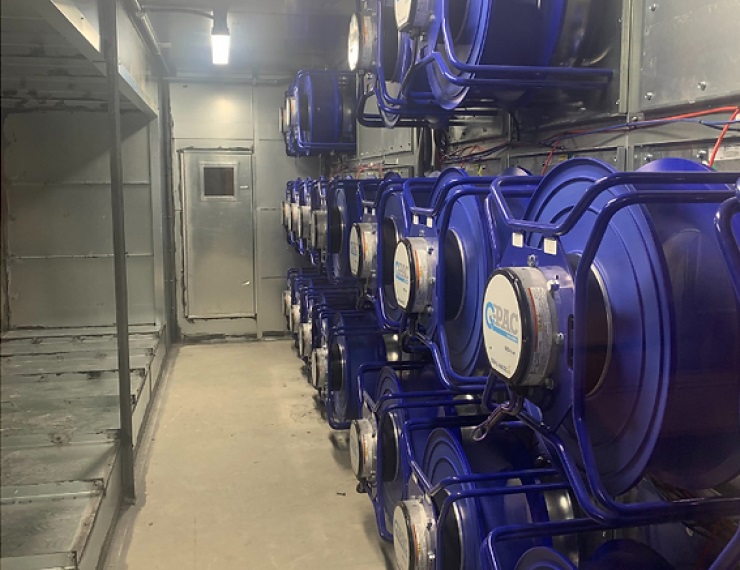
Project profile
Chicago Public Schools
- Increased efficiency by 95%
- Efficiently meets classrooms needs for airflow velocity and volume requirements
- Installed each array in 6 hours
- 20 times lower maintenance costs

The situation
Maximizing Efficiency and Cost Savings: Q-PAC Fan Arrays Outperforming Traditional Models in Airflow and Maintenance in Lindblom Math and Science Academy
Project location: Chicago, IL
Property size: 500,000 sq. ft.
Situation: As the 10 - 30HP belt-driven fans neared their operational limit, repair costs for these units surged to $175,000. CPS aimed for an economical solution leveraging to achieve superior CFM efficiency without the financial downsides associated with investing in outdated systems.
The process
Reengineering Lindblom's Airflow Legacy
Built in 1917, Lindblom Math and Science Academy, part of Chicago Public Schools (CPS) in West Englewood, housed seven air handling units (AHUs) ranging from 13,000 CFM to 46,000 CFM with a combined airflow of 195,000 CFM powered by belt-driven fans nearing their lifespans’ end. CPS sought a custom solution to match the school's airflow requirements and enhance efficiency. The goal was to integrate smoothly with the existing air handlers, navigate the intricate multi-level building layout, and improve the wire-to-air efficiency, previously at 29.21%.
The results
Revolutionizing School HVAC: A Swift Retrofit
In collaboration with Black Hawk HVAC, Melvin Cohen Associates, Thermosystems, and Chicago Public Schools, Q-PAC utilized its QUIPS software to design a custom system for the school. QUIPS provided vital data such as electrical/HP specifications, CFM, and Static Pressure for the Q-PAC FS1 Fan Systems, facilitating multiple system retrofit options, instant pricing, and quick field decisions. Known for its ease of use and speed, QUIPS made the design process simple and user-friendly.
Q-PAC delivered a comprehensive solution tailored to the school's needs, minimizing the need for extensive controls and electrical work during installation, thus reducing field labor costs and accelerating deployment, with each of the seven FS1 Fan Systems installed in under six hours. This innovative system boosted wire-to-air efficiency, resulting in an impressive 57.05% efficiency rate in AHU-2 that covered 51,000 CFM effectively meeting classroom airflow requirements while maintaining energy efficiency and reducing maintenance costs by requiring only one hour of maintenance every six months, a substantial improvement over traditional models.
**Efficiency calculations were performed for supply fan 2 (AHU-2)**
Download the PDF version of this project profile
Find a simply efficient solution
Collaborate with our team of experts to solve your HVAC challenge
Explore other project profiles
Our system was designed to be adaptable. See how we have
provided effective solutions across a variety of industries

Hospital installation

Department store installation
